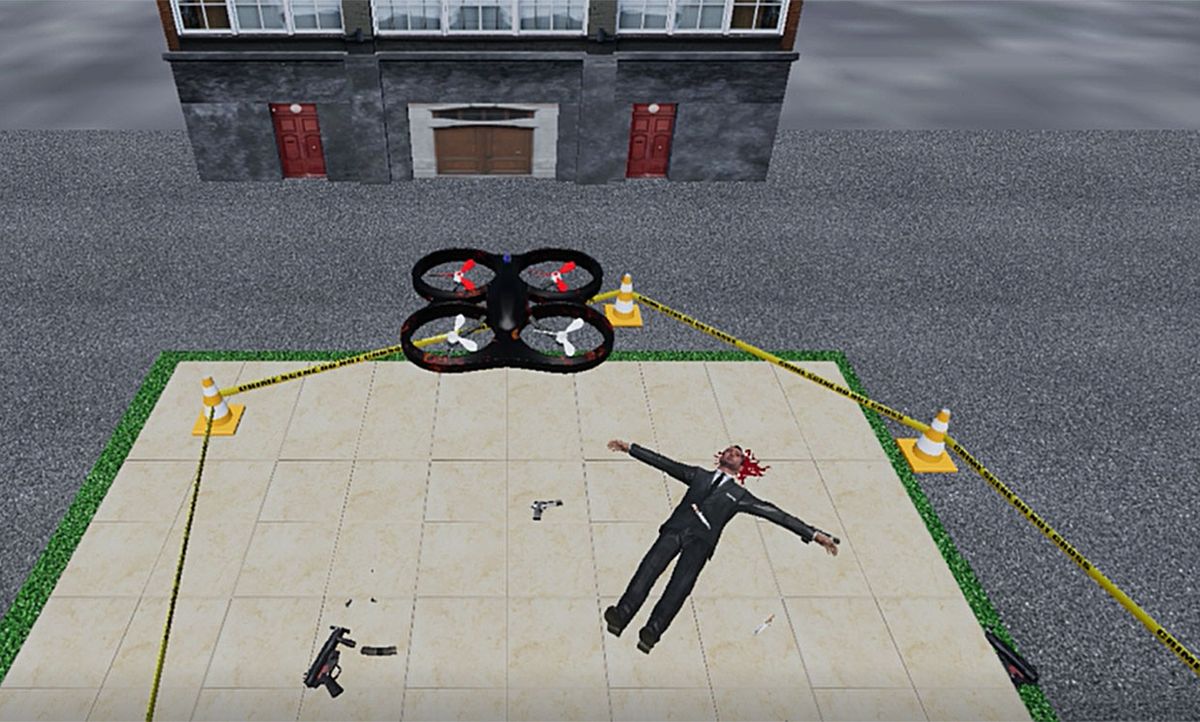When detectives and other forensics specialists arrive at a crime scene, there is a pressing need to survey the area quickly. Environmental disturbances such as wind or an incoming tide could ruin valuable evidence, and even the investigators themselves are at risk of contaminating the crime scene. Could a fleet of evidence-surveying drones be of help?
Pompílio Araújo, a criminal expert for the Federal Police of Brazil, is responsible for recording crime scenes exactly as found. In his other role as a researcher at the Intelligent Vision Research Lab at Federal University of Bahia, he is trying to make his first job easier by developing drones that can—very quickly—home in on a piece of evidence and record it from multiple angles.
The drone system, dubbed AirCSI, starts by scanning a crime scene with one big sweep, using a stereo camera and a visual self-localization and mapping (SLAM) system to monitor the drone’s position.

“Initially, the drone [flies] at a height that can take a broad view of the crime scene and detect some larger pieces of evidence,” explains Araújo, who published this preliminary stage of research in a previous study. The drone system was first trained to detect guns, but could be trained to identify other types of weapons or evidence such as blood stains.
In his latest work, described in IEEE Geoscience and Remote Sensing Letters, Araújo and his colleagues developed a secondary system for the drone, which includes a second camera, trained to image evidence from multiple angles. In this newer version, AirCSI calculates a circular area for each piece of evidence that’s initially identified, considering its relevance and size. The drone system then calculates a zigzag trajectory and makes a series of additional sweeps in order to collect more detailed data on each piece of evidence.
“As a result, AirCSI provides a sketch with the localization of the evidences, as well as a detailed crime scene imagery,” says Araújo. His team used simulation software to test this newer version of AirCSI, and found that using multiple angles to detect evidence is up to 18 percent more effective than using only one angle.
While the researchers have yet to test the new, multi-angle approach beyond simulations, they expect to try it out in a real environment by the end of this year or early next year.
Meanwhile, they are working to overcome a few of the system’s limitations. For example, AirCSI can currently operate only in open environments with no obstacles. “In the future, we plan to do anti-collision routines and training for more criminal evidences,” Araújo says.
He also plans on developing a way to completely reconstruct crime scenes using the drone footage, creating a virtual environment that investigators can explore indefinitely—or at least until the crime is solved.
Michelle Hampson is a freelance writer based in Halifax. She frequently contributes to Spectrum's Journal Watch coverage, which highlights newsworthy studies published in IEEE journals.



